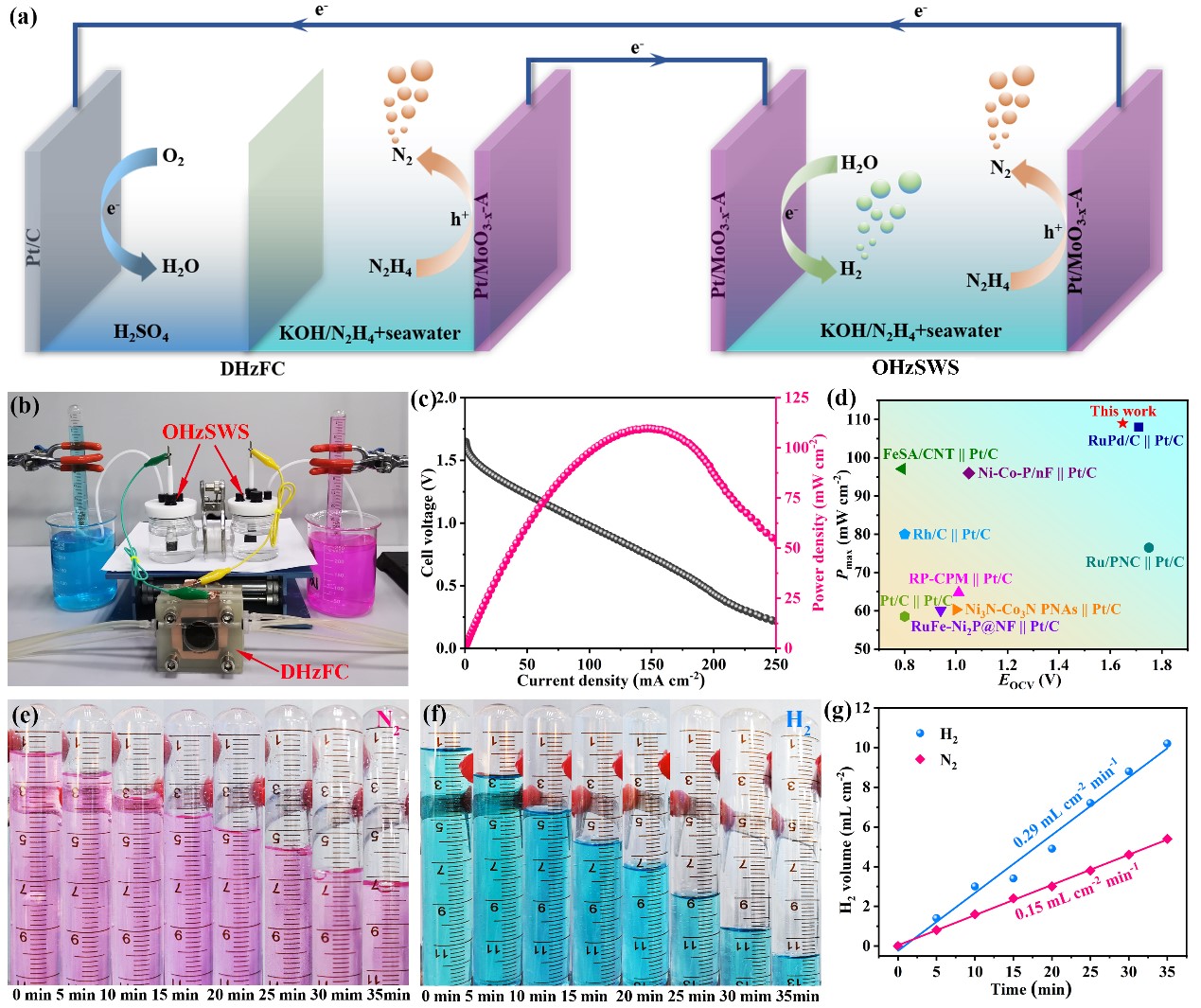Qinghao Quana, Xiaolei Lia, Chen Songa, Qisen Jiaa, Huasen Lua, Xuejing Cuia, Guangbo Liua,*, Xin Chenb,*, and Luhua Jianga,*
a College of Materials Science and Engineering, Qingdao University of Science and Technology, Qingdao 266042, P. R. China
b Center for Computational Chemistry and Molecular Simulation, College of Chemistry and Chemical Engineering, Southwest Petroleum University, Chengdu 610500, P. R. China
*Emails: liugb@qust.edu.cn; chenxin830107@pku.edu.cn; luhuajiang@qust.edu.cn
Abstract:
Hydrazine-assisted water electrolysis is a promising energy-efficient strategy for hydrogen production. Nonetheless, developing high-performance bi-functional electrocatalysts towards both hydrogen evolution reaction (HER) and hydrazine oxidation reaction (HzOR) remains great challenges, especially for hydrazine-seawater splitting. Herein, we report a polyoxometalate-assisted in-situ synthesis protocol for rationally design of crystalline/amorphous Pt/MoO3-x interfaces toward both efficient HER and HzOR. The polyoxometalate-derived crystalline/amorphous Pt/MoO3-x interfaces deliver working potentials of only -23 and -41 mV at 10 mA cm-2 for HER and HzOR in seawater electrolyte, respectively. Meanwhile, ultrahigh mass activities of 38.39 A mgPt-1 for HER at -100 mV potential and 23.84 A mgPt-1 for HzOR at 50 mV potential are achieved, over 30.2 and 52.9 times higher than those of commercial Pt/C. As bi-functional electrocatalysts for overall hydrazine-seawater splitting, the electrolyzer requires a cell voltage of only 55/238 mV at 10/100 mA cm-2, 1.584/1.543 V lower than that of the seawater splitting system. Moreover, a proof-of-concept self-powered hydrazine-seawater electrolysis system driven by direct hydrazine fuel cell is further demonstrated, which achieves a hydrogen production rate of 0.29 mL cm-2 min-1. DFT calculations verify that, the crystalline/amorphous interfaces endow Pt/MoO3-x an optimized d-electron configuration with favorable H* adsorption and promoted dehydrogenation kinetics of *N2H4 to *N2H3 in the potential-determining step. This work provides a novel strategy and inspiration toward the design of efficient bi-functional electrocatalysts for hydrazine-assisted hydrogen production from seawater.
Keywords: Crystalline/amorphous interface; d-electron configuration; hydrazine oxidation; hydrogen evolution; self-powered seawater splitting
https://doi.org/10.1016/j.cej.2024.150897



